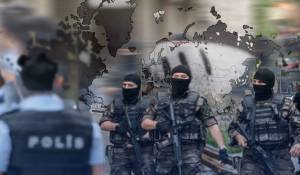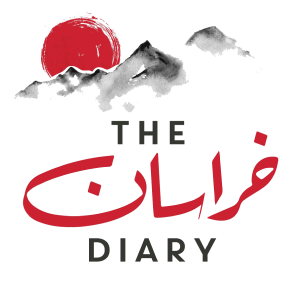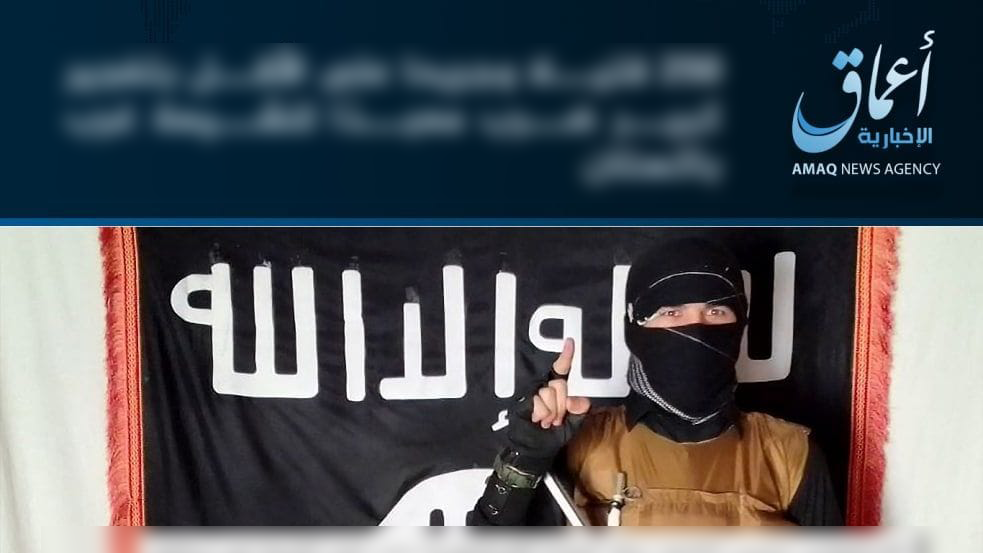
Riccardo Valle

January 20, 2026
By | Riccardo Valle

The Islamic State Khorasan Province (ISKP) continued its sectarian campaign against Shias in 2022, both in Afghanistan and Pakistan.
According to The Khorasan Diary’s database, ISKP has claimed 18 attacks so far that targeted the Shia community since the start of this year, both with assassinations and bombings. Some of the most devastating attacks have been carried out during the months of Ramadan and Muharram.
Only during Ramadan, ISKP claimed attacks on Shias in Kabul, Herat and Mazar-e-Sharif, where they killed and wounded more than 100 people in a mosque explosion and several others in public places. During Muharram, ISKP also attacked Shias in Kabul, targeting processions and buses. However, March is the deadliest month of this year for now, when ISKP’s suicide bomber Julaybib al-Kabuli targeted an Imambargah in Peshawar on March 4, killing and wounding more than 200 people.
Specifically, because of its virulent campaign against Shias in Afghanistan and Pakistan, ISKP became the first province in terms of casualties among all the Islamic State provinces three times; in March, April, and August, respectively, according to issues 329, 336, and 351 of Islamic State newsletter al-Naba. This made ISKP the most anti-Shia province of IS, capitalizing on its sectarian attacks by frequently praising them on its media platforms and outlets.
ISKP has interlinked its fight against the Taliban with its sectarian campaign against Shias, as the group perceives the former as allied with the latter in its propaganda frequently. Specifically, after the attack at Peshawar’s Imambargah, ISKP mouthpiece in the region – Al-Azaim Foundation – issued a statement that described its campaign against Shias as not even sectarian in nature, arguing that Shias are not even Muslims. Moreover, the text said attacks against Shias are in revenge for those Muslims killed by the Iran-linked Pakistani Shia Fatemyioun and Zainabiyoun Brigade in Iraq, Syria, and Pakistan, promising more attacks.

ISKP attacks against Shias are not only typical of IS sectarian nature; additionally, the group developed its own anti-Shia local narrative, published and shared on ISKP’s online channels. For instance, two books published this year cast a light on ISKP’s distorted view of Shi’ism and international politics. The first book was published in February and it has been written by ISKP prolific author Abdul Qahar, the same who wrote a famous ISKP book, which lashed out at the Pugwash Organisation’s activities in Afghanistan and Pakistan (the second volume of the book was published this year). Abdul Qahar narrates that from Syria to Khorasan, the US and Shias are setting up militant groups with the goal of eradicating the Islamic State from the region: the Baathist regime in Syria; Hezbollah in Lebanon; Taliban in Afghanistan; and Hamas in Palestine. The book then draws a parallel between Hamas and the Taliban, stating both groups are national, democratic Iranian puppets. The book argues both Hamas and the Taliban are branches of the Muslim Brotherhood, which is perceived by ISKP as a close ally of Iran, which exploits these groups to re-create the Persian Empire and suppress “true Muslims”.
The second book is a study of Sharia rulings on Shia sects published in May shortly after the end of Ramadan. After describing the beliefs of Shias under the distorted vision of ISKP, the book ends by calling all Shias apostate, declaring takfeer on them, and arguing that they are the main infidels in Islam, and thus it is not allowed to impose jizya (Islamic tax) on them while enslaving them becomes allowed, in turns. This echoes a more recent publication from ISKP which specifically targeted Shias in Afghanistan, while another one reiterated that the Shias are apostates and the Taliban are the real Khawarij (ostracised from the fold of Islam) as they make deals and alliances with apostates. Just before the start of Muharram, on July 26, ISKP issued a new fatwa which made it mandatory to target places of worship of non-Muslims as well as Shia mosques, which indeed happened with several attacks in Mazar-e-Sharif.
The prominent Pashto language Khurasan Ghag magazine has frequently featured articles against the Shias. As the fourth and the sixth issues presented a Pashto translation of an article appeared on the sixth number of IS English magazine Dabiq, featuring pictures of late al-Qaida leader Aymann al-Zawahiri with Iranian flags behind. Moreover, the third and seventh issues are extremely sectarian against Shia Hazaras, using harsh language against the Taliban for protecting the Ashura commemoration.
In an effort to internationalise its message, ISKP’s English language magazine Voice of Khurasan frequently featured articles on Shias and the Taliban. During Ramadan, issues three and four reported ISKP attacks during the holy months, while in issue six, an article titled “Taliban, Guardians of Shirk” accused the Taliban of endorsing and participating in many Shia practices, like Nowruz and the 43rd anniversary of the Islamic Revolution of Iran at the al-Mustafa International University of Kabul. The text also lashed out at the Taliban mayor of Herat for calling late Iranian General Qassem Soleimani a martyr.
Abdul Qahar narrates that from Syria to Khorasan, the US and Shias are setting up militant groups with the goal of eradicating the Islamic State from the region: the Baathist regime in Syria; Hezbollah in Lebanon; Taliban in Afghanistan; and Hamas in Palestine
ISKP propaganda against Shias is directly linked to the group’s ideology from Syria and Iraq, but also to the plethora of sectarian groups in Afghanistan and Pakistan, particularly takfeeri groups which regularly excommunicate Shias and other minorities. However, attacks against Shias from ISKP are not only part of ideology, but also a precise strategy which aims at sparking chaos in the region, creating new sectarian cleavages in the society, and destabilising the entire region
ASSESSMENT AND FUTURE DEVELOPMENTS
ISKP propaganda against Shias is directly linked to the group’s ideology from Syria and Iraq, but also to the plethora of sectarian groups in Afghanistan and Pakistan, particularly takfeeri groups which regularly excommunicate Shias and other minorities. Specifically, the Farsi-publishing department of ISKP took time to disseminate and adapt IS sectarian ideology to ISKP narration. On August 23, the group published a small booklet that drew from several IS leaders from Syria and Iraq – Abu Bakr al-Baghdadi, Abu Muhammad al-Adnani, and Abu Laith al-Athari – and from Africa – Abu Musab al-Barnawi – ostracising Shia sect in Iraq, Syria, and Iran. Similarly, another book published days later compiled the history of the Iranian region Ahvaz, depicting it as an account of oppression from Iranian Shia dynasties.

This anti-Iran propaganda reached its apex when on October 27, when Abu Aisha al-Omari carried out an attack on a Shia shrine in Shiraz, Iran. While the attack was not claimed under ISKP, the group capitalized on it by publishing a video on November 4 featuring Abu Aisha and several other ISKP militants who attacked Shia community. The video featured attacks both in Afghanistan and in Pakistan, claiming ISKP war against Shias stems from the presence of Fatemyioun and Zainabiyoun brigades in Iraq and Syria.
However, attacks against Shias from ISKP are not only part of ideology, but also a precise strategy which aims at sparking chaos in the region, creating new sectarian cleavages in the society, and destabilising the entire region. Some of these attacks went unclaimed because they were considered too extreme even for ISKP ideology, but nonetheless effective in creating terror and bringing a climate of distrust towards the Taliban. Instances in the past of these attacks include in 2021, the bombing of the Syed al-Shuhada School in Kabul; in 2022, Abdul Rahim Shahid High School and Mumtaz Education Centre, also in Kabul; and most recently, on September 30, the bombing of the Kaj Educational Centre, in Kabul, too. This last attack also sparked a fierce reaction by Taliban, who conducted a CT operation in Kabul a month later, killing 6 ISKP members and capturing 2 responsible for the several attacks in the city against the Hazara Shia community, especially in Dasht-e-Barchi district.
By capitalising on these attacks, ISKP not only gains popularity in the eyes of Islamic State Central but also attracts new recruits imbued by sectarian ideology or disgruntled militants from other organisations – such as Tehreek-e-Taliban Pakistan and al-Qaida in the Indian Subcontinent – that prohibited attacks against Shias in their new codes of conduct. Finally, the ultimate goal is to prevent the Taliban from stabilising their power in Afghanistan; for this reason, soft targets like minorities and specifically Shias, will continue to be preferred targets.